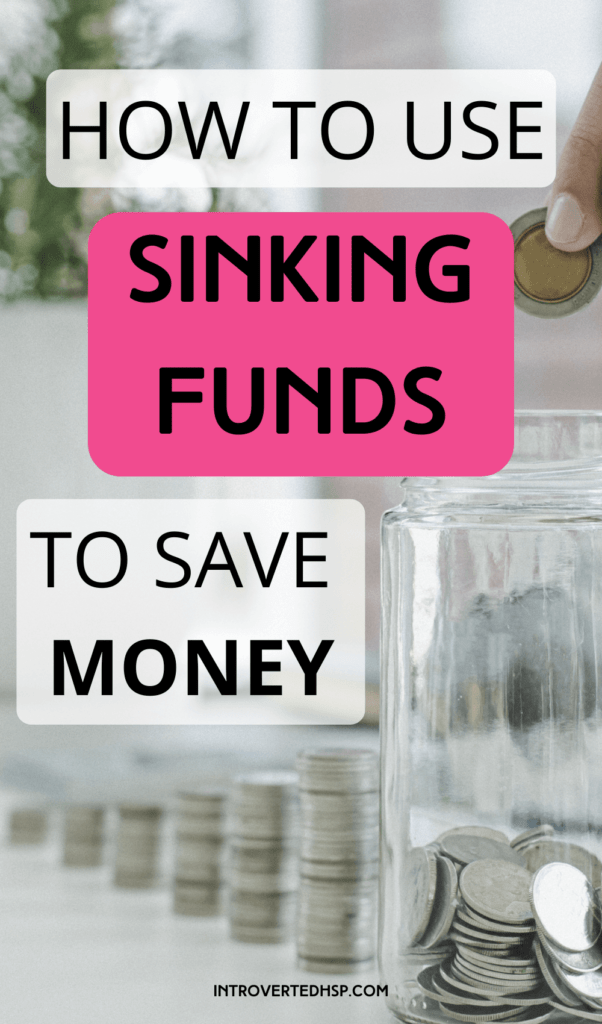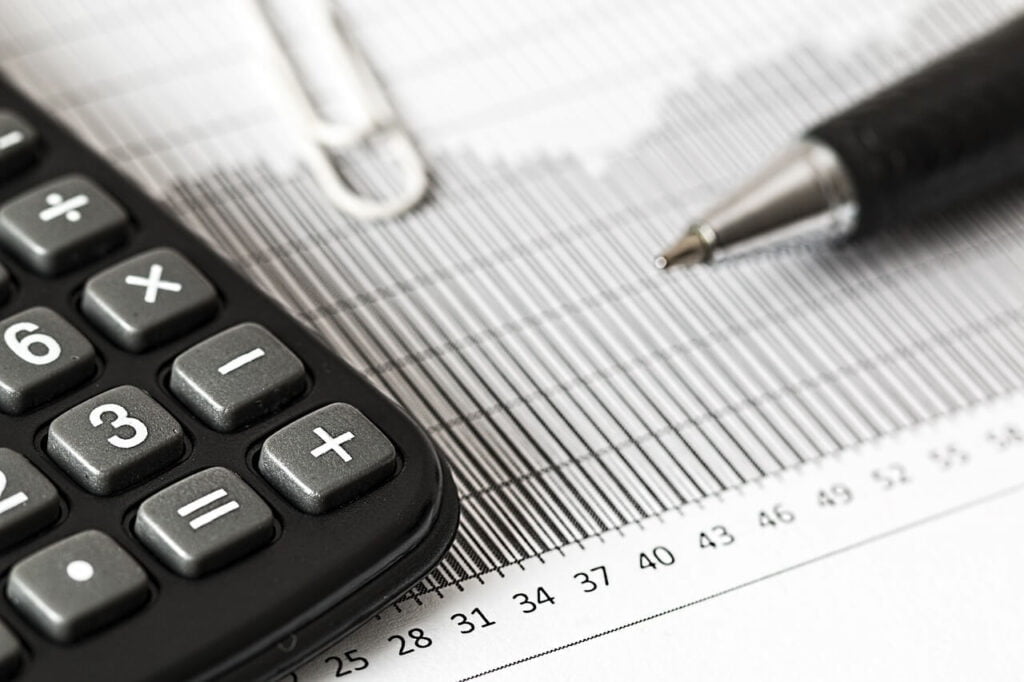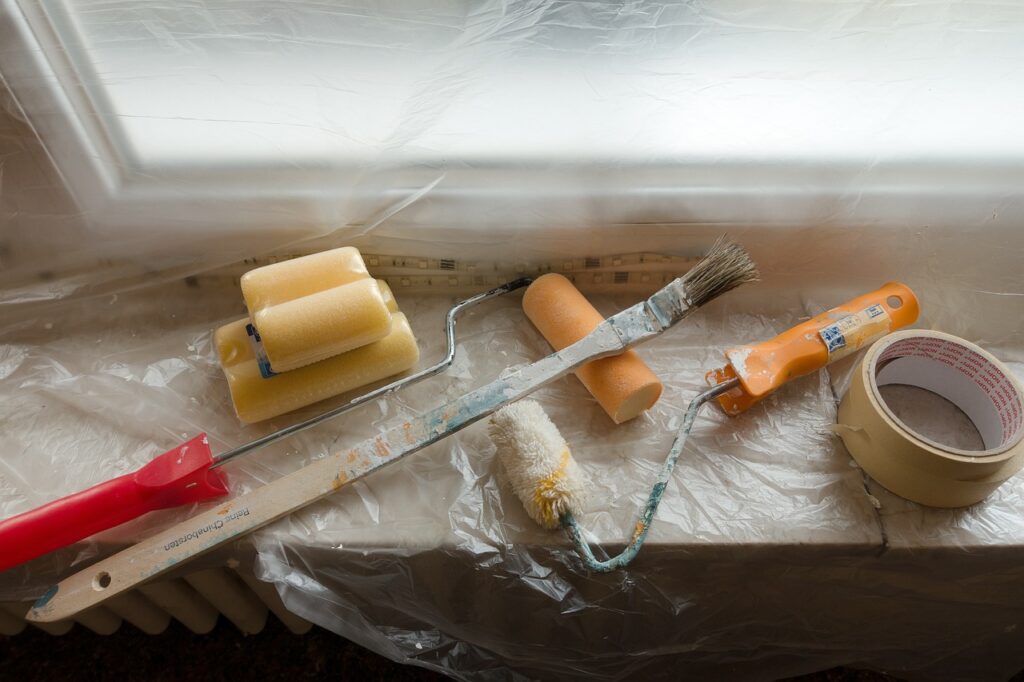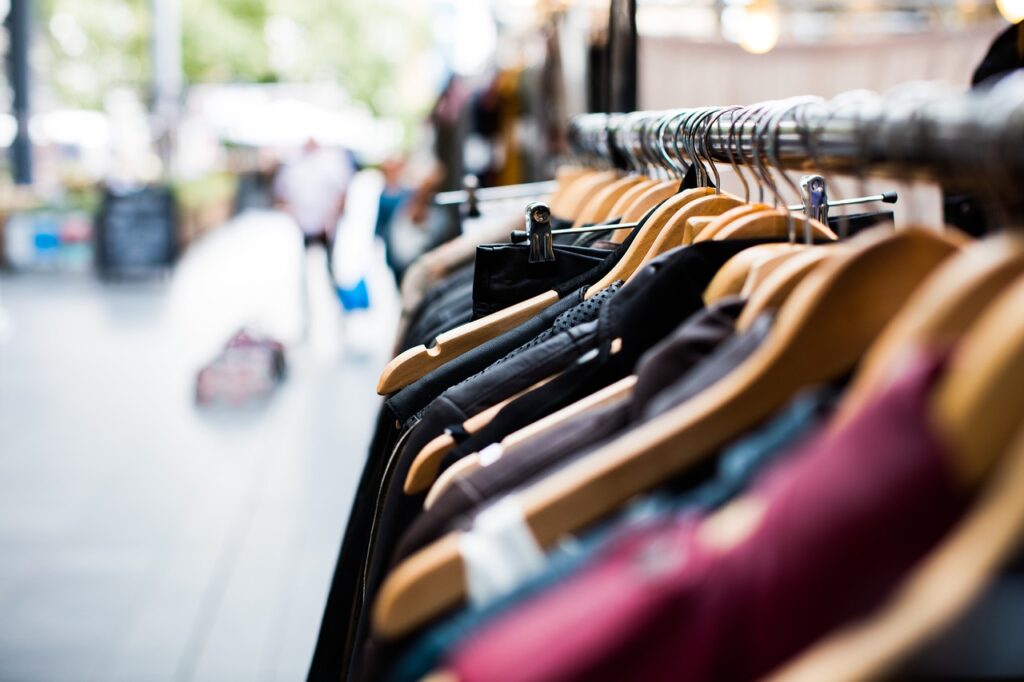
This post may contain affiliate links, which means if you make a purchase through these links, I may receive a small commission at no extra cost to you. As an Amazon Associate I earn from qualifying purchases. Please read my disclosure for more info.
What are sinking funds?
A sinking fund is a bit like a savings account but for bigger upcoming expenses. It looks like a savings account but you know exactly what you are saving for, that’s the difference. You put a specific amount of money in these sinking funds at regular times to save for bigger expenses in the future.
You can create as many sinking funds as needed to be able to stick to your budget every single month.
A sinking fund is not an emergency fund. Money from sinking funds is meant for payments you know are coming, money from an emergency fund is for emergencies only. Most of the time, an emergency comes out of the blue and therefore you need an emergency fund!
Why use them?
You can use sinking funds to stick to your monthly budget. When you set aside some money every month for a bigger expense, you won’t have to take a big sum from your monthly budget when needed. This will help you stay on budget.
Another plus side of using sinking funds is for the people who feel bad about spending money in general. When you live very frugally and find it difficult to spend your money on anything, it could help to allow yourself to take money from a sinking fund for fun spending. When you create a fund for some fun or a fund for gifts, you will probably feel less guilty for spending the money because it was meant to do that and you budgeted for it!
Sinking funds will also make saving for big expenses a lot easier. It’s less scary to put away 100 dollars a month than when you have to pay 1200 dollars for a vacation or the newest iPhone at one time.

Where to keep your money?
You have to make sure that you can easily take the money you need from your sinking funds. The money must be all-time accessible.
The best way to store your money is in a high-yield savings account.
You could also choose any kind of savings account that allows you fast access but when you have a high-yield savings account, you might make some money from those savings!
There are banks where you can open a whole bunch of savings accounts which makes it easier because you can use one savings account per sinking fund. Make sure you don’t have to pay for the extra accounts though!
There are also budgeting apps (for example YNAB) that make this possible for you, to have multiple ‘buckets’ of money in one account.
I don’t have any budgeting apps at the moment so my sinking funds are in my bank savings account. Currently, I have sinking funds for my car, retirement, taxes, social security, house down payment, and travel.
How much should you save?
This is different for every individual. You should consider your income and the money you need for the things you need or want.
Determine how much money you need to pay for the expense you are saving for and divide this amount by the number of months you have until the payment is due. When the payment is something necessary, this should be the sinking fund to prioritize. You don’t have to save the exact amount every month for every sinking fund.
Let me give you an example. You have to pay your car insurance in a few months but haven’t saved enough yet. You should set more money aside for this sinking fund than say for buying a new phone because you simply would like to have a new phone. If you need a new phone because your old one broke down this is different of course.
So, start calculating!
You can keep all your sinking funds in a notebook to keep track of them. Draw little blocks with the monthly amount of money for each sinking fund and color them in when you have set aside the money.
Or you could go less old-school and install an app to help you with this method. The notebook option would be more budget-friendly in comparison to most apps.
Some sinking funds you need to refill all the time and others are for one-time expenses.

You might also like: 7 Habits of Powerful Women Who Save a Lot of Money
21 Categories of Sinking Funds
Think about everything you need or want money for, irregular expenses that you don’t have to pay every month. Most sinking funds are for bigger expenses or a large sum of money in total.
Sinking funds could be created for fun things like vacations, a new laptop, or a phone or they could be for necessary expenses that come only around once or twice a year.
Let me give you a list of possible sinking funds you can create for yourself!
Pick the ones you want or need in your life.
1. Gifts
When you have a big family and a lot of friends, there are so many gifts you need to buy. This can cost you a little fortune! Estimate how much you spend for each holiday period like Christmas, Thanksgiving, Birthdays, Valentine’s-, Mother’s- and Father’s Day, weddings, and baby showers.
To make a good estimate, you could track a year of gift spending and make that your average.
Buying gifts is a lot nicer when you know you can pay for them all without going into debt!
You could also choose to create a sinking fund for each different holiday if this is easier for you. It’s perhaps easier to stick to your budget when you have separated sinking funds for this category.
2. Travel

Traveling is such a nice sinking fund category if you ask me! Traveling can cost a lot of money so saving up in advance will help you to get to the destination you want. If you want a more expensive holiday you could save up longer or put more into your sinking fund when you have the money available for it.
So many people love to travel so I think this sinking fund is a must-have for everyone. Start exploring the world!
3. New Electronics
A laptop, a new iPhone, new wireless earphones, etc. are all expensive items. It’s wise to save for them in a sinking fund before your favorite appliance breaks down.
You could also treat yourself by saving up for the newest thing without really needing it but you would love to have it.
4. Your Wedding

Actually, most things on this list are very expensive but a wedding can be extremely pricy! However, it doesn’t need to be if you want a small intimate wedding.
What is the wedding of your dreams and how much money do you need to make this happen? Start saving today!
Perhaps wait until you have a long and steady relationship or have been proposed to ;).
5. Car: insurance, taxes, maintenance, repairs, gas
This is a big one. You could choose to split the big sinking fund category ‘car’ into every possible car expense but I think it’s easier to keep it as one big category.
Having a car comes with a lot of costs. Some costs are really big to pay upfront like the car insurance so it’s best to save for this as well. When your car breaks down, you could use your emergency fund for this because you did not see this coming! But you could also save up for repairs and cover parts of the cost with this car sinking fund.
6. New Car

You could buy a car in cash when you save up for it in advance, otherwise, you will have to get a loan or lease and can save for this as well. The more money you can pay out of pocket, the less interest you will have to pay!
You should start saving for a new car when your current car is getting a bit older. Start sooner rather than later so you can save a small amount each month and not feel it in your wallet as much.
7. Healthcare
Depending on which country you live in, healthcare expenses can be a bitch! Everybody gets sick and especially as you get older the more care you will need to save some of your money for this. This could be money for paying your health insurance, doctor visits, medication, etc.
This sinking fund is meant for expenses you see coming. If it’s a medical emergency it can be covered by the money from your emergency fund (hopefully). When a big amount of money is needed, it would help to have some in this sinking fund to still have something left over for your next emergency!
8. Dental Care

This could be included in your healthcare sinking fund but I think it’s best to keep them separate.
When you have good teeth and don’t have much going on there, this fund doesn’t have to be large. But when you have poor teeth and not-so-good oral health, save up for your precious teeth!
Maybe you want braces or cosmetic dentistry in the future, those things cost a lot!
In some countries, it is best to have dental insurance so this cost can be paid with this sinking fund as well.
9. Cosmetic Surgery
I’ve added this to the sinking fund list because more people are getting something changed about their bodies these days. I’m not saying anybody needs cosmetic surgery but if you do want it, know that it’s really expensive!
It’s also very important to really think about this for a long time so you are certain that you want to go through with this change in your appearance. So you could start saving early on and if you would change your mind, use the big sum of money for something else! 🙂
10. Taxes

A not so fun sinking funds… but we all have to pay them, taxes. Depending on where you live, this could be a high percentage of your income.
Employees will get their paycheck with taxes deducted from it but when you work for yourself, make sure to put this money aside. Employees could also have to pay more taxes than expected by their employer so it’s always good to save some money for this.
11. Social Contributions
How much you need to set aside for social contributions also depends on where you live. But it’s best to do so before you instantly have a large sum you didn’t save up for. Not a fun contribution, but necessary to keep our society functioning.
12. Retirement

This one is up to you but it is highly recommended to start saving for your retirement as soon as you start working. It sounds silly because it’s a lifetime away, but when it suddenly gets there and you don’t have your savings, you are depending totally on your country and the working class for a contribution and this might not be nearly enough to live a comfortable life.
The last thing you want to worry about when you are old is if you have enough money to put the heat on every day in winter… So start saving!
Save to invest in secure products with guaranteed returns is best in this case. Otherwise, your money will evaporate thanks to inflation.
13. House maintenance and repairs
When you are a homeowner, you will have to repair and maintain things in and around the house all the time.
You should set aside 1-3% of the original price of your house for repairs and maintenance every year. When you buy an older house, it’s more likely to be 3% than when you bought a new one. This is of course a guideline and in your case it might differ a bit.
14. House renovation

When you want to buy an older house and want to start renovating in the next 2 years, start saving now! Find out how much the total renovation will cost and see what will be achievable for you to save.
You could always prolong the period for saving when you aren’t able to save as much as you need per month to reach your previous set deadline.
15. House deposit
A house deposit can be a lot of money! It can vary from 5-20% of the purchase price depending on your country and whether banks are willing to give you a loan or not. You should also consider the additional costs that come around the corner when buying a house like a notary, registration.. etc., this could also be like 10% of the purchase price. Do your research before setting this percentage but start saving if you want to buy a house one day.
16. Education

To pay for education for your children or yourself, over all these years you will need a large amount of money. Every year when September comes, there will be a lot of bills that you can save for the entire year so you won’t be so badly surprised when it arrives.
17. Hobbies
Paying for your hobbies or those of your children is mostly a one or two-year payment so in total also a bigger sum. Especially when you have a big family or expensive hobbies this can cost you! Prepare yourself and you will enjoy your hobbies even more.
18. Pet care

Those lovely furry creatures who are our best friends need the best care they can get! Having a pet costs so much more than the purchase price. There are the veterinary costs (check-ups, medication, surgery), pet sitting, pet tools, food, grooming, etc. We love those animals sometimes like children (or more) so we have to make sure we can provide for them at all times!
19. Self-care
Everybody needs some form of self-care in their life. Take good care of yourself, that way you will also be able to care for others. Self-care can come in all different sizes and shapes, some more and some less expensive, but give yourself a sinking fund so you won’t feel guilty about spending some money on your well-being!
20. Clothing

Clothes will get worn out over time when you wear them enough so always have a budget to buy new clothes. You don’t have to be a fashionista to start a sinking fund for this because this is a basic need.
21. Entertainment
Last but not least, the entertainment sinking fund! Or should it be called sinking ‘fun’? This is definitely one of the more fun categories as it allows you to spend money on fun activities or services.
Things like a Netflix subscription, concert tickets to go see your favorite artist, going to the movies, etc. You shouldn’t feel guilty for spending money on these things ever but when you budget for it, it’s even more guilt-free enjoyment!
Conclusion
Everybody who budgets will benefit from having sinking funds.
You are able to save up for bigger expenses so they don’t cause you a headache or nervous breakdown when those big payments pop up. You will have saved for those expenses in advance, great!
Your money will go to the things that you value or need and you can spend the money from the sinking funds guilt-free because they fit in your budget.
Go ahead and make your own!
